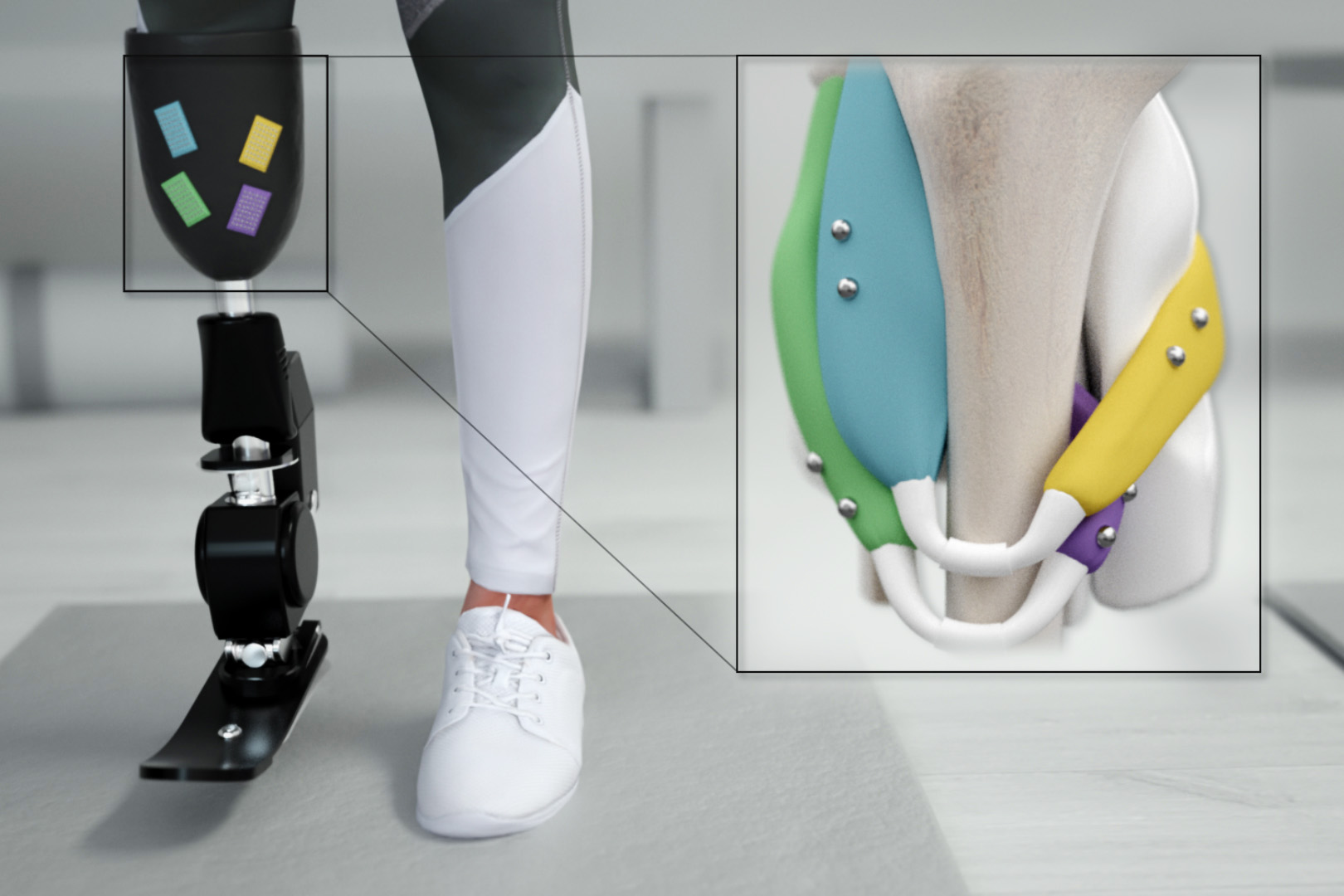Mind and magnet
With a system that uses magnetic beads to measure muscle position, amputees could make prosthetic limbs move just the way they’ve envisioned.
People who use prosthetic limbs after an amputation often struggle to make them move naturally. Now a new technique based on tiny magnets offers the potential for much more precise and intuitive control.
Today, most prosthetic limbs are controlled via electromyography (EMG), which uses electrodes—either implanted surgically or placed on the skin—to record electrical signals from the brain that tell the muscles in the residual limb to contract. But this doesn’t capture what the muscle is actually doing. Magnetomicography (MM), the experimental alternative developed by researchers in Hugh Herr’s Mechatronics group at the MIT Media Lab, relies instead on pairs of magnetic beads embedded in the tissue. By measuring how the magnets move relative to one another, the researchers can calculate precisely how much and how fast the muscles are contracting. This feedback can be relayed to the prosthesis with little lag time.

The measurements could then be fed into a computer model that predicts where the patient’s phantom limb would be in space, based on the contractions of the muscle. A patient would be able to direct the device to move as desired, with the results matching a mental picture of the limb position.
“With magnetomicrometry, we’re directly measuring the length and speed of the muscle,” Herr says. “Through mathematical modeling of the entire limb, we can compute target positions and speeds of the prosthetic joints to be controlled, and then a simple robotic controller can control those joints.”
In a recently published paper on the work, which used three-millimeter magnetic beads inserted in the calf muscles of turkeys, the researchers found that they could use magnetic sensors placed on the outside of the legs to determine the position of the magnets with a precision of 37 microns (about the width of a human hair) as they moved the turkeys’ ankle joints. These measurements could be obtained within three milliseconds.
Within the next few years, the researchers hope to do a small study in humans with amputations below the knee. The sensors used to control the bionic limb could be placed on clothing, attached to the skin, or affixed to the outside of the prosthesis.
MM could also be used to improve the muscle control achieved with a technique called functional electrical stimulation, which is now used to help restore mobility in people with spinal cord injuries. And it could potentially guide robotic exoskeletons, which can be attached to an ankle or another joint to help people with muscle weakness as a result of a stroke or some other health issue.
“Essentially the magnets and the exoskeleton act as an artificial muscle that will amplify the output of the biological muscles in the stroke-impaired limb,” Herr says. “It’s like the power steering that’s used in automobiles.”
“Our hope is that MM will replace electromyography as the dominant way to link the peripheral nervous system to bionic limbs,” Herr says. He adds that once inserted in the muscle, the beads could remain in place for a lifetime without needing to be replaced.
Keep Reading
Most Popular
Large language models can do jaw-dropping things. But nobody knows exactly why.
And that's a problem. Figuring it out is one of the biggest scientific puzzles of our time and a crucial step towards controlling more powerful future models.
How scientists traced a mysterious covid case back to six toilets
When wastewater surveillance turns into a hunt for a single infected individual, the ethics get tricky.
The problem with plug-in hybrids? Their drivers.
Plug-in hybrids are often sold as a transition to EVs, but new data from Europe shows we’re still underestimating the emissions they produce.
Stay connected
Get the latest updates from
MIT Technology Review
Discover special offers, top stories, upcoming events, and more.